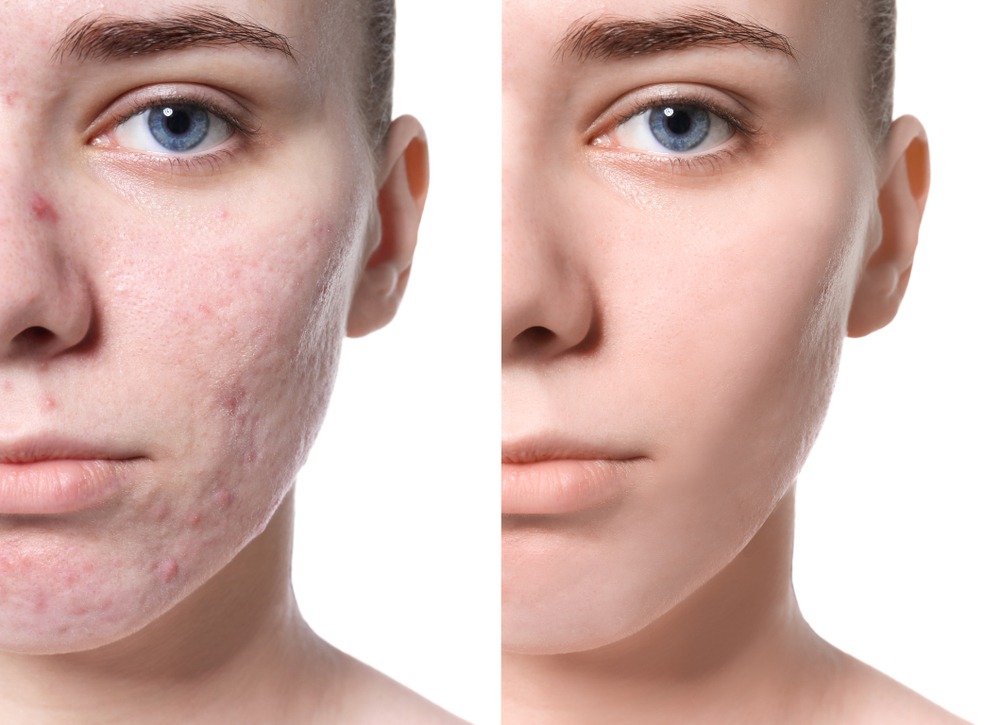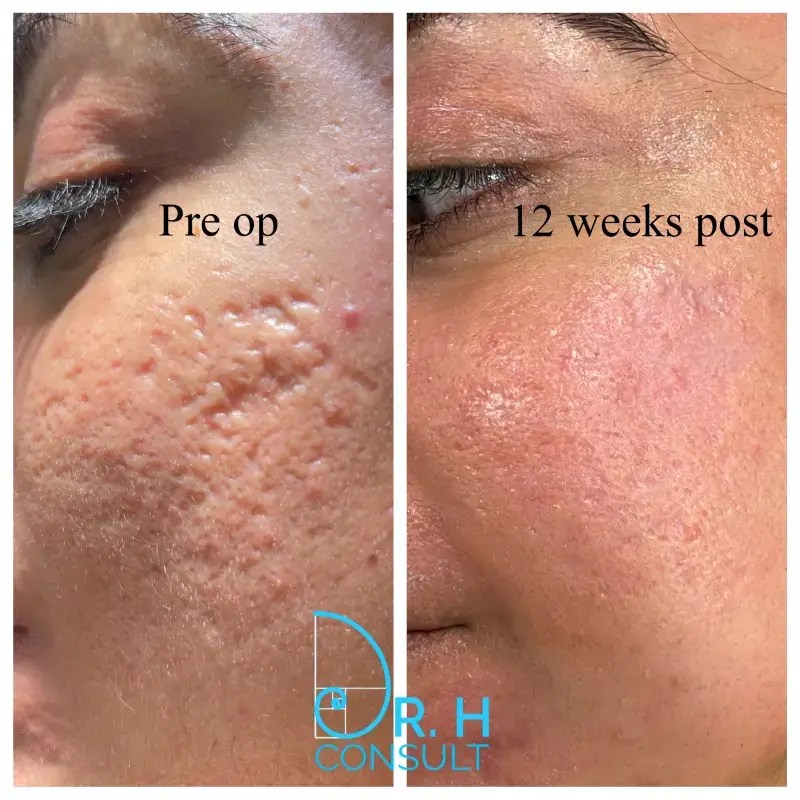Advanced Acne and Acne Scars Treatment: Bid Farewell to Blemishes
Advanced Acne and Acne Scars Treatment: Bid Farewell to Blemishes
Blog Article
Discovering Skin Problem: Treating and identifying Acne Scars for Healthier Skin
Acne scars stand for a considerable problem for individuals looking for to maintain healthy skin, as they can influence both appearance and self-worth. Comprehending the various types of scars, from atrophic to hypertrophic, is essential for establishing proper therapy choices.
Recognizing Acne Scars
Comprehending acne scars is vital for anyone that has experienced extreme acne, as these marks can have a lasting effect on both physical look and psychological wellness. When the skin undertakes inflammatory reactions throughout energetic acne sores, acne marks create. The intensity of scarring is frequently influenced by variables such as the sort of acne, its period, and individual skin characteristics.
The body's natural healing process can result in either atrophic scars, which show up as depressions in the skin, or hypertrophic marks, which are raised and result from overflow of collagen. Additionally, the psychological toll of acne scars must not be underestimated; numerous people report feelings of humiliation, anxiety, and lowered self-worth. This emotional burden can affect social interactions and overall lifestyle.
Resolving acne marks needs a thorough understanding of their development and effect. Awareness of the possibility for long-term effects related to unattended marks can motivate individuals to look for suitable treatments. Early intervention and effective management methods can significantly enhance skin appearance and enhance emotional resilience, emphasizing the relevance of comprehending the complexities bordering acne scars.
Types of Acne Scars
Acne marks can be categorized into distinctive kinds, each exhibiting distinct qualities and requiring particular treatment strategies. The main kinds of acne marks include atrophic, hypertrophic, and keloid scars.

Hypertrophic scars, on the other hand, are elevated over the skin degree and are the outcome of excessive collagen production during the recovery process. They commonly stay within the boundaries of the initial acne lesion. Keloid marks are similar but extend past the initial injury site, creating bigger, elevated locations that can be itchy or excruciating.
Comprehending these types of scars is necessary for picking ideal therapy options. Various marks might react far better to details treatments, such as laser therapies, fillers, or medical treatments, highlighting the value of a customized technique to acne mark monitoring.
Recognizing Your Marks
When evaluating the look of your skin, it is crucial to precisely determine the kind of marks existing, as this will certainly educate one of the most effective treatment method. Acne marks generally fall into 2 groups: hypertrophic and atrophic marks. Atrophic scars, which are one of the most usual, look like depressions or imprints on the skin. These can additionally be categorized right into ice-pick marks, boxcar marks, and rolling scars, each exhibiting distinctive features and needing different methods for evaluation.
Hypertrophic scars, on the various other hand, are raised and happen due to too much collagen production throughout the healing procedure. Recognizing the certain features of your scars-- such as depth, width, and appearance-- is vital for proper recognition. Furthermore, take into consideration the circulation of marks across your skin, as this can show the extent and duration of the acne condition.
Involving with a dermatologist can provide beneficial insights into the nature of your scars, assisting in the distinction between various types. read this article A detailed understanding of your scars will eventually bring about an extra tailored and effective therapy strategy, making certain a clearer and healthier complexion.
Therapy Choices Readily Available
Identifying the certain kind of acne marks present on your skin lays the groundwork for checking out reliable therapy options. Common kinds of acne marks consist of atrophic (depressed), hypertrophic (increased), and post-inflammatory erythema.
For atrophic marks, alternatives such as chemical peels, microneedling, and laser resurfacing are extensively used. Chemical peels use acids to get rid of the external layer of skin, advertising new cell growth. Microneedling includes tiny needles that produce micro-injuries, promoting collagen manufacturing. Laser resurfacing targets harmed skin cells, boosting appearance and tone.
Hypertrophic marks Discover More can be treated with corticosteroid shots to squash the mark or laser treatment to minimize soreness and enhance look. acne treatment for sensitive skin. Silicone gel sheets and stress dressings may also aid in handling elevated marks
Additionally, facial fillers can temporarily fill in depressions from atrophic marks, while surgical excision might be proper for severe cases. Each treatment option has its benefits and factors to consider, making it necessary to seek advice from a dermatologist. They can provide individualized referrals based on the type and extent of your scars, as well as your skin kind and overall wellness.
Tips for Avoidance
Effective avoidance methods can substantially decrease the chance of establishing acne scars. The initial step is to keep a constant skincare regimen that includes mild cleansing, peeling, and moisturizing. Making use of non-comedogenic items helps protect against stopped up pores, which can worsen acne. Additionally, including topical treatments having salicylic acid or benzoyl peroxide can successfully manage outbreaks and lessen swelling.
Staying clear of need to pop or pick acne lesions is vital, as this can cause deeper skin damages and enhance the threat of scarring. Instead, consider making use of a cool compress or non-prescription therapies to minimize swelling and redness.
Sunlight protection is an additional crucial element of avoidance; ultraviolet (UV) rays can dim scars official website and impede the recovery procedure. Applying a broad-spectrum sunscreen with at the very least SPF 30 daily can protect the skin and advertise even recovery.
Finally, keeping a well balanced diet regimen abundant in minerals, vitamins, and anti-oxidants sustains skin wellness and healing. Remaining moisturized and handling stress and anxiety levels can likewise play a significant function in reducing acne flare-ups. By executing these approaches, individuals can substantially decrease their chances of establishing acne marks.

Final Thought
Finally, understanding and recognizing acne marks is essential for effective treatment and achieving healthier skin. Various types of acne marks, including atrophic and hypertrophic scars, necessitate specific interventions tailored to individual needs. Treatment options array from chemical peels and microneedling to corticosteroid injections, highlighting the significance of seeking advice from a skin specialist. Furthermore, embracing a gentle skincare regimen and shielding the skin from UV direct exposure can dramatically add to the prevention of additional scarring and overall skin health.
The body's all-natural recovery procedure can result in either atrophic marks, which appear as anxieties in the skin, or hypertrophic scars, which are raised and result from overproduction of collagen. They are further separated right into 3 subtypes: ice pick scars, boxcar marks, and rolling marks. Acne marks typically drop into two categories: atrophic and hypertrophic marks. These can better be identified into ice-pick scars, boxcar marks, and rolling scars, each exhibiting distinct features and needing various techniques for assessment.
Various types of acne scars, consisting of atrophic and hypertrophic marks, require details interventions tailored to private requirements.
Report this page